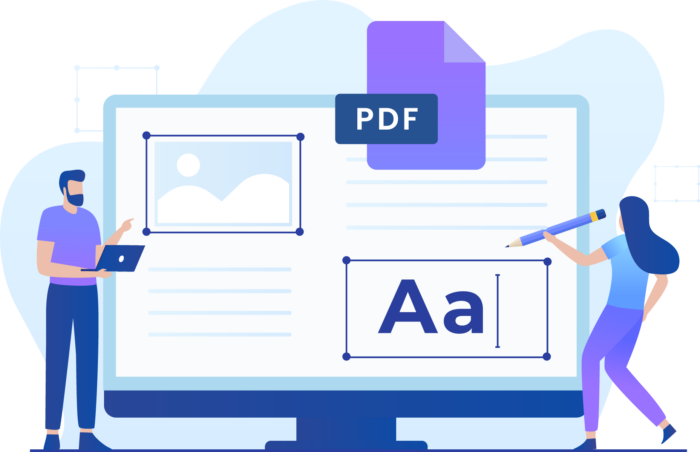One of the benefits of using L & D Mail Masters is the level of expertise that you are getting with each and every project, and one of my favorite parts about working for L & D Mail Masters is the encouragement to gain new knowledge. One day while sitting at my desk working, flipping through my Adobe Acrobat program, a thought hit me. Who even is Adobe? I use their programs every day, and we use PDF’s as a clean, efficient and professional way to share proofs with our clients. They’ve become a household name, yet I realized I knew hardly anything about the company itself. I did a little digging, and I was fascinated by what I learned, and I’d like to share with you this new knowledge.
Who is Adobe, what is a PDF, and how has it risen to be the most important file software to ever be introduced to the printing world?
Adobe was founded in 1982 by two friends and former employees of the Xerox PARC company, John Warnock and Chuck Geschke. They used this new company as a way to market and sell a program language they designed, PostScript. It wasn’t until 1989 that Adobe released its first program that we’re all familiar with, Photoshop. Originally released with Macintosh, this program allowed Adobe to grow exponentially in the following years. With the introduction of this new program and a few others (and as a result, new file types), Adobe introduced Acrobat in 1993. This program allowed communication between their programs using their new file type, the PDF.

PDF stands for Portable Document Format, and its intention was a “what you see is what you get” file type. With there being so many kinds of file types, production printers were having trouble with printing the formatting as it was designed. Have you ever designed something in Microsoft Word, printed it directly from your computer, only to have the layout spread incorrectly on the final piece? The PDF was developed to fix that problem. However, as recent as it seems, the PDF became widely available for non-paying Adobe users in 2008, when it released the Adobe Reader, (now known as Acrobat Reader) for free use. It kept most of its features behind the purchase of the Adobe software, but it made PDFs easier for the general public to access and utilize. This decision quickly made the PDF the standard for fixed-format electronic documents.
Because the PDF is near universal now, most programs allow you to export to a PDF when saving your finished document. The benefit of this is that it will look exactly the way you designed it across every device, as well as when sending your artwork to the printer. You won’t have to worry about the formatting not appearing correct when sending. Because the file is universal, this means the printer will print the file exactly as it’s seen. This prevents issues like missing fonts, broken links, and misplacement of photographs. Plus, the Adobe Acrobat program allows users to do things such as add watermarks, password protect the file, edit, add printers’ marks, and other features that make the entire process incredibly easy and helpful to use.

PDF’s versatility and consistency is the reason we use the file type as well as the Adobe Acrobat program here at L & D Mail Masters. It assures that the image that you see is what is going to be printed, not just in appearance but in quality as well. It’s just one of the many steps we take to ensure that your project is the best that it can be.
Adobe has managed to set themselves on top of the market for file sharing. Becoming a household name isn’t easy, but Adobe was able to because of the ease, convenience, and ingenuity of the PDF. I look forward to seeing what programs Adobe produces in the future, and how I can use them to design projects that will amaze and impress.
Looking for ways to impress your clients?



